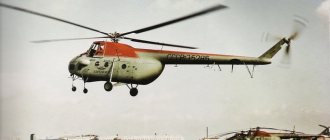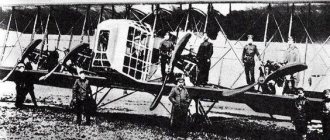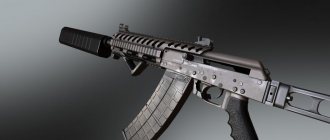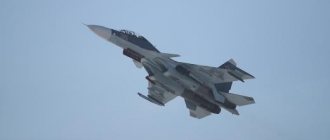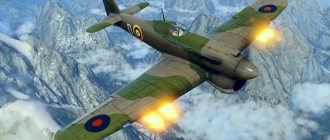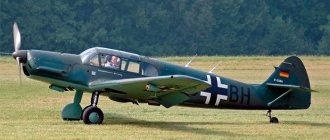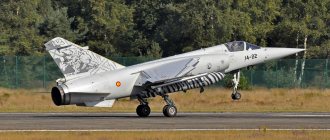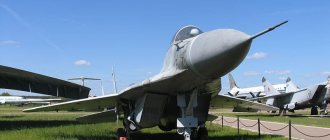Photo: Oleg Belyakov / wikimedia.org
The Russian Be-200 is the world's only amphibious jet aircraft, which gives it undeniable speed advantages when fighting fires.
The Be-200 can take on board 12 tons of water, and it does this in just 15 seconds. Since 2003, the Be-200 has been used to combat fire both in Russia and abroad: in France, Portugal, Italy, Greece, Indonesia, Israel. This year, Russian Be-200s came to the aid of Turkey - from June 16, for four months, two aircraft will be on duty in the vicinity of Antalya, Izmir and Bodrum.
History of creation
The whole history of the BE-200 began on July 17, 1992. The Soviet-style A-40 amphibious aircraft in service by that time was outdated and needed to be replaced, which is why the Russian Ministry of Defense signed a contract for the development of a new model. The main parameters of the future amphibian were higher performance and the possibility of multi-purpose use.
In the fire-fighting version, it is possible to fill the tanks with water on the go.
The first two test copies produced by the Irkutsk Aviation Plant were presented to the Ministry of Defense in 1994 and 1995, respectively, and tests of the BE-200 aircraft showed satisfactory results.
The designers spent several more months fine-tuning and correcting the identified design flaws, after which, in 1996, the BE-200 model, codenamed “Altair,” passed the certification procedure.
By this time, all world analogues of the BE-200 had lower characteristics in terms of functionality, power and carrying capacity.
For a relatively long period of time, information about this development was not disseminated or disclosed - due to the use of the BE-200P modification by Russian border intelligence. However, in 2008 it became known that production of the described model of amphibious aircraft in Irkutsk had been discontinued. All subsequently released copies belong to the production of TANTK named after. Beriev in Taganrog, while the Irkutsk Aviation Plant supplies some individual components.
Winged Firefighter
After the creation of the first models, TANTK continued the development of a civil amphibious aircraft. In 2002, a modified Be-200ChS (Be-200ES-E in the export version) took to the skies for the first time. This aircraft model is maximally adapted to the requirements of the main customer - the Ministry of Emergency Situations - and differs from the basic one in a number of details. The aircraft is equipped with an upgraded on-board flight navigation system ARIA-200M, new EDSU and SPU-200ChS systems, an on-board surveillance system AOS, an external sound warning system SGU-600 and a searchlight SX-5. The cargo compartment is equipped with two places for observers who, through special dome-shaped windows-blisters, can conduct visual monitoring of the area.
The Be-200ES can be used to deliver rescuers, equipment and cargo to disaster areas, evacuate victims, search and locate ships and vessels in distress, identify emergency situations and other purposes.
Photo: Dmitry Terekhov / wikimedia.org
Since 2004, Be-200 aircraft have been involved in rescue operations and firefighting in Russia and around the world. The flying boat has already helped firefighters in France, Portugal, Italy, Greece, Indonesia and Israel, and since June 16 this year, two Russian amphibious aircraft have been on fire watch in Turkey.
In 2010, the Be-200 received a certificate from the European Aviation Safety Agency (EASA). Experts are confident that over the past 20 years the Be-200 has not developed any worthy domestic or foreign competitors. In terms of a number of flight performance characteristics, the Russian amphibian still has no analogues in the world.
Design features
The BE-200 amphibious aircraft belongs to the family of jet seaplanes. Thus, it is equipped with two gas turbine engines of the D-436PP design. Motors and engine compressors are located above the bases of the wings to protect them from accidental ingress of water when moving through water, takeoffs and landings.
The design of the aircraft wing is swept, the wings converge at an obtuse angle, the apex of which is directed forward. The Irkutsk Aircraft Plant continues to produce wings for the aircraft described even after the transfer of production to the Beriev TANTK. The tail elements make it look like the letter T (when viewed from the front or rear).
The standard aircraft landing gear includes three sets of paired wheels with shock absorbers. One landing gear is located in the front lower part of the fuselage, two more are located symmetrically to each other in the lower rear part.
Thanks to the presence of the landing gear, takeoff and landing can be carried out both on the water surface and at standard airfields.
The main distinguishing design point is the presence of eight water intake tanks located in the lower part of the fuselage. With their help, the aircraft can collect water in flight over the water surface for subsequent discharge in the desired location.
Each tank is equipped with an independent water intake and discharge system, due to which the volume of intake and discharge varies from 1.5 to 12 cubic meters.
Considering that the BE-200 was originally manufactured taking into account water intake by the aircraft, loading the tanks in flight is not difficult.
Moreover, the aircraft can be used not only for its intended purpose, but also as a cargo or passenger aircraft. Since the fuselage is sealed, it is possible to transform the BE-200 into a vehicle for cargo or passenger transportation immediately after making changes to the interior configuration. The maximum capacity of the cabin equipped for transporting people is 43 passengers with two crew members.
Design
The Be-200 is built according to the aerodynamic design of a monoplane with a high-swept wing, a T-shaped tail and a three-point landing gear with a controlled front strut. Above the root of the wing is a power plant consisting of two bypass turbojet engines. The sealed fuselage-boat of large aspect ratio is divided into several compartments by waterproof bulkheads. Water tanks are located under the cargo compartment floor. The aircraft is equipped with a water rudder in the stern, underwing floats, devices for towing on water, mooring and reloading equipment. The Be-200ChS is equipped with the ARIA-200M flight and navigation system jointly developed by the Research Institute of Aviation Equipment (Zhukovsky, Moscow Region and AlliedSignal Aerospace (USA), which allows two crew members to simultaneously pilot the aircraft and operate fire-fighting equipment.
Performance characteristics
One of the most interesting moments for a sophisticated connoisseur will be a complete description of the technical characteristics of the BE-200 Altair amphibian. Numbers will tell about the performance of a domestic jet seaplane much more clearly and more specifically than words.
The main tactical and technical characteristics are the overall dimensions and measured capabilities of the aircraft. BE-200 has quite compact dimensions - with a body length of 32 meters, it has a height of less than 9 meters. The lifting area of the wing is almost 117.5 square meters. The maximum take-off weight varies: for take-off from land it is 42 tons, for take-off from water it is one ton more, with the weight of the BE-200 without cargo being 25 tons.
| Crew | 2 people |
| Engine | 2 x D-436TP |
| Traction | 7500 kgf |
| Passenger capacity | 65 people |
| Empty mass | 28,000 kg |
| Payload | 6000 kg |
| Cruising speed | 610—710 km/h |
| Range of flight | 3600 km |
The main feature of the BE-200 is its flight performance characteristics, which are quite impressive for an amphibian. The aircraft can be used for takeoff from the water surface at a wave height of no more than 1.2 meters, for flights of up to 3,600 kilometers without refueling at an altitude of no more than 8 kilometers above sea level. The seaplane's cruising speed is 700 km/h with a total engine power of 15,000 kgf
To take off from water, a takeoff run of at least one kilometer is required (before reaching a takeoff speed of 220 km/h); for land, the takeoff length is 700 meters.
Before a plane comes to a complete stop after landing on land, it requires one kilometer of runway, and when landing on water - approximately 1.3 kilometers.
It can also take 12 tons of water - it takes them in flight over water at a speed close to the landing speed (180-200 km/h), after first opening the tanks for filling.
Control and navigation of the seaplane in the airspace is carried out using a set of ARIA-200M equipment, which ensures high accuracy of display of all flight information. Thanks to this, a crew of only two people is required to operate the aircraft.
How does a “flying ship” work?
In terms of characteristics, the Be-200 is close to attack aircraft, but, unlike combat aircraft, its water “bombs” are exclusively peaceful. An important point: despite its “amphibious” nature, the Be-200 is practically in no way inferior to similar land aircraft in terms of its data.
The Be-200 Altair incorporates many innovations of both domestic and world level. For example, for the first time in the practice of creating seaplanes, the Beriev Design Bureau used the three-channel fly-by-wire control system EDSU-200, which ensured high maneuverability and confident aerobatics in extreme conditions. Another interesting solution is that in the cockpit they abandoned the steering wheels and installed control sticks like those of a fighter plane.
Photo: Alexander Markin / wikimedia.org
"Flying ship" TANTK named after. Beriev combines elements of an aircraft and a water vessel. For example, in the cockpit of an airplane, next to aviation instruments, you can see marine equipment. There is even a real anchor on board the Be-200.
The power plant includes two D-436TP turbojet engines mounted on pylons above the wing root to prevent water splashes during takeoff and landing.
The world's hydroaviation is characterized by turboprop designs, while the Be-200 is the world's only civil amphibious aircraft with jet engines. The advantage of the Be-200 jet over other firefighting aircraft is its high speed, which makes it possible to prevent the spread of fire in the early stages.
The airframe of the aircraft is partially made of composites. First of all, of course, to combat corrosion - the main enemy of any seaplane. Basically, the fuselage is made of anti-corrosion aluminum-lithium alloys. For the first time in the domestic seaplane industry, the aircraft cabin was made completely sealed along its entire length.
Applications and known operators
The main purpose of the BE-200 is to extinguish forest fires. The ability to collect water on the move allows the amphibian to carry out raids on fires without returning to the airfield.
The usefulness of the amphibian for extinguishing fires cannot be overestimated - the Russian Ministry of Emergency Situations regularly uses it in eliminating natural disasters.
It should be noted that the amphibious aircraft, serial for the Russian Ministry of Emergency Situations, is also used by the Ministry of Emergency Situations of Azerbaijan.
There are eleven such hydroplanes in the Russian Federation (nine of them are on the balance sheet of the Russian Ministry of Emergency Situations, two are on the balance sheet of the Beriev Aircraft Company), in Azerbaijan the BE-200ES modification is used in only one copy.
Eight thousand meters under the keel
The Be-200 can be used at class B airfields and water bodies with a depth of at least 2.6 m. It will not be possible to land it on the water in a storm, but in light waves of three points and a wave height of up to 1.2 m, the aircraft feels confident. Maximum flight altitude is 8100 m, maximum speed is 700 km/h, ferry range is 3500 km.
The Be-200 aircraft is successfully operated from class B airfields with a runway length of 1800 m, as well as from any freshwater or sea reservoirs with a depth of 2.6 m and a wave height of up to 1.2 m (waves - 3 points). Water intake on the Be-200 is carried out through two folding “ears” in the bottom. Water can be discharged entirely or dosed from the tank compartments.
The Be-200 can pick up 12 tons of water in 12-15 seconds. To accurately release water, pilots must have certain sniper skills, make allowances for wind, and the like - no automation is provided here.
Photo: Alexander Markin / wikimedia.org
Compared to land-based forest firefighting aircraft, which can take on large volumes of water and have to return to the airfield each time to refill their tanks, the Be-200 can perform approximately ten times as many intake and release cycles in the same amount of time.
To rescue people in the water, a large hatch opens on the fuselage of the aircraft, through which you can not only get on board under your own power, but also load the wounded. The rescue modification of the Be-200 is equipped with four inflatable rafts, with which you can rescue people from the water. A mobile hospital on board allows doctors to provide first aid to victims.
The Be-200 is capable, like a conventional car navigator, of remembering a route and automatically moving between a body of water and a fire. This ability is very important when working in heavy smoke, when there are no visual references.
A flying boat can, with minor modifications, turn into a search and rescue, cargo, passenger, ambulance or patrol aircraft. At the same time, the main function of the Be-200 - fire fighting - is preserved.
Modifications and weapons
There are various modifications of the BE-200 Altair amphibious aircraft, which differ from the original model in modified functionality.
Most of the modifications are carried out by the military department, and they need to be listed.
- BE-200P is used in border patrol. It differs from the standard in a large number of tracking equipment, which makes it possible to identify the equipment of a potential enemy and border violators at long distances. The crew has been increased to nine people - in addition to two pilots, the presence of special equipment operators is required on board.
- BE-200PS is produced in larger quantities than the previous modification and is used in search and rescue operations. Russian aviation plans to take a number of BE aircraft from the manufacturer to make up for the shortage of seaplanes until 2020.
- BE-200ChS is a modification produced primarily for export. One such Altair was sold to Azerbaijan, and four more were ordered by the People's Republic of China in 2016. In terms of functionality, it is practically no different from the standard configuration, but can be converted into a patrol or search and rescue seaplane.
According to defense industry experts, the BE-200 has a great future ahead of it.
A multi-purpose aircraft, capable of moving on land, by air, and by water, with quite decent performance characteristics - this is exactly what pilots want.
Considering the interest in this development abroad, the described unit can well be considered a world-class aircraft.
Dependence on weather conditions
Water intake for fire extinguishing.
Weather anomalies also limit the scope of use of the Be-200. Thus, a plane can land on water only if the wave does not exceed 1.2 meters.
Which on the Beaufort scale means a storm of no more than force three.
Operational restrictions arise due to the fact that strong waves lead to increased overloads. Instability of movement appears during the take-off run.
There are calculated data that substantiate that with a ratio of wavelength to the dimensions of the amphibian body of 1.15, a violation of stability leads to maximum overload values. In such conditions, operation of the aircraft is prohibited.
There are also restrictions on wind speed. If it exceeds 15 m/s, the flying boat cannot be used. The video of the airliner testing shows how it begins to “throw” when the air flow speed increases to the limiting values.
